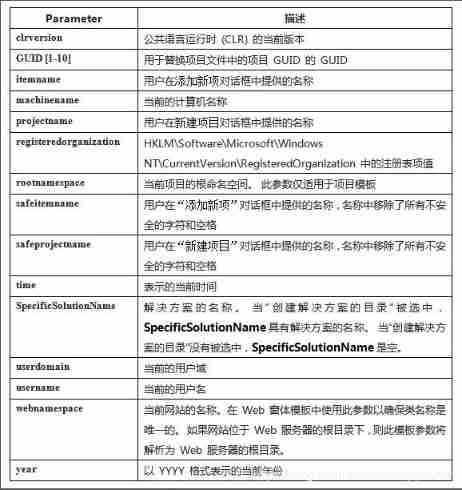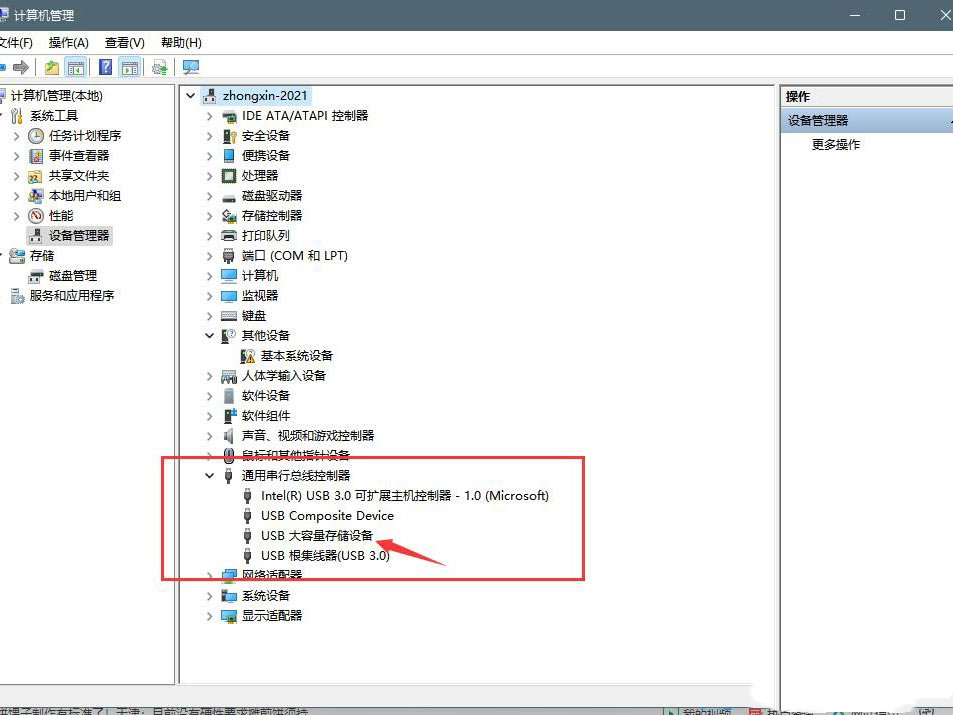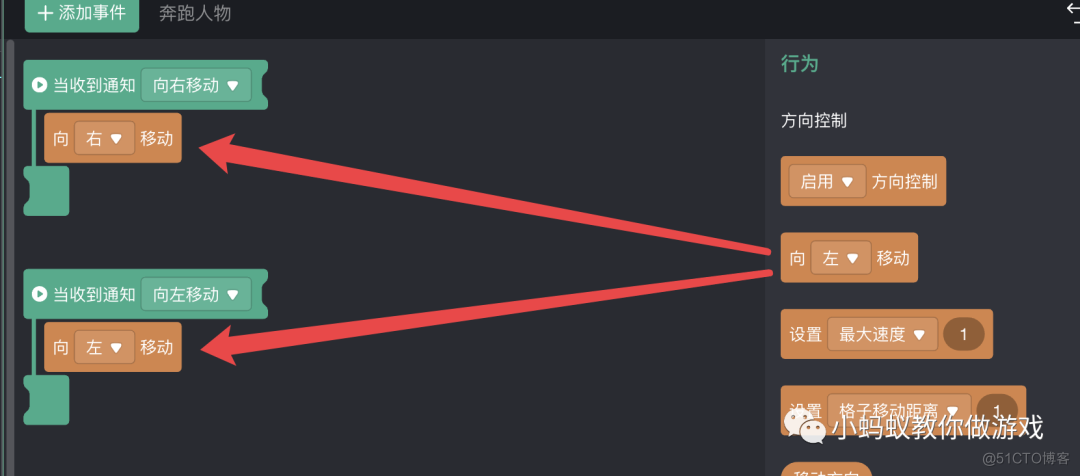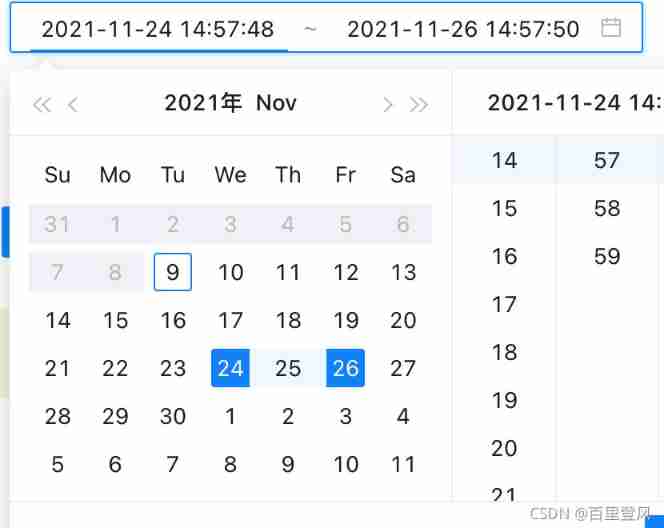当前位置:网站首页>Time convolution Network + soft threshold + attention mechanism to realize residual life prediction of mechanical equipment
Time convolution Network + soft threshold + attention mechanism to realize residual life prediction of mechanical equipment
2022-07-07 22:30:00 【Eva215665】
1. About data
This model adopts PHM2012 The whole life data of bearings in the data competition , as well as XJUST-SY The public data set of bearing life cycle is verified . Both are public datasets , Can own Baidu /Bing/Google download , And learn how to organize data files . This example only takes PHM2012 Take the data ,XJUST-SY Data only needs to replace the data storage path , The code doesn't need to change .
2. The code is not explained in detail
2.1 Import necessary Libraries
from keras.layers import Input,concatenate,GRU,Embedding,UpSampling1D,BatchNormalization,Conv1D,MaxPooling1D,Dense,Flatten,Lambda,Dropout,Concatenate,LeakyReLU,BatchNormalization,Reshape,Activation,GlobalAveragePooling1D,AveragePooling1D
from keras import regularizers
from keras.callbacks import EarlyStopping
from keras.optimizers import Adam
from keras.models import Sequential, Model
from keras import backend as K
from keras import Model,regularizers
from scipy import signal
import tensorflow as tf
import numpy as np
import matplotlib.pyplot as plt
from sklearn.model_selection import train_test_split
from sklearn.metrics import mean_squared_error
import xlrd
import os
from sklearn.preprocessing import MinMaxScaler
from keras.models import load_model
import keras
config = tf.ConfigProto()
config.gpu_options.allow_growth = True
keras.backend.tensorflow_backend.set_session(tf.Session(config=config))
import os
os.environ['CUDA_VISIBLE_DEVICES'] = '/gpu:0'
2.2 Write function , Import data
PHM2010 data Full_Test_Set Under folder Bearing1_4 In the data , Adopted ; The separator will be 、 branch 、 second 、x Acceleration in the direction of 、y Write a... To all acceleration values excel Cells of , It is inconsistent with several other file formats , So I wrote two functions , For reading Bearing1_4 Data under and data under other folders .
Read non Bearing1_4 Functions of data
# Read the horizontal signal from the folder csv data
def readfile_h(path):
files = os.listdir(path)
# take acc Pick out the documents
files = list(filter(lambda x: x[0:4]=='acc_' , files))
# Solve the disorder problem , By the end of 5 Bit to last 4 Sort the size of numbers between bits
files.sort(key=lambda x:int(x[5:-4]))
rowdata = []
for file in files:
info = path+"/"+file
# take csv The data in the file is converted into a matrix
data = np.loadtxt(open(info,"rb"), delimiter=',', skiprows=0)
rowdata = np.hstack((rowdata,data[:,5]))
return(rowdata)
The following read is not Bearing1_4 data
## 2803 individual csv file
train1_1_h = readfile_h('xxxx\Learning_set\Bearing1_1')
#871 individual csv file
train1_2_h = readfile_h('xxxx\Learning_set\Bearing1_2')
test1_3_h = readfile_h('xxxx\Full_Test_Set\Bearing1_3')
test1_5_h = readfile_h('xxxx\Full_Test_Set\Bearing1_5')
test1_6_h = readfile_h('xxxx\Full_Test_Set\Bearing1_6')
test1_7_h = readfile_h('xxxx\Full_Test_Set\Bearing1_7')
The following is read Bearing1_4 Functions of data
# Read 1_4 The data of
def readfile_h(path):
files = os.listdir(path)
# take acc Pick out the documents
files = list(filter(lambda x: x[0:4]=='acc_' , files))
# Solve the disorder problem , By the end of 5 Bit to last 4 Sort the size of numbers between bits
files.sort(key=lambda x:int(x[5:-4]))
rowdata = []
for file in files:
info = path+"/"+file
# take csv The data in the file is converted into a matrix
data = np.loadtxt(open(info,"rb"), delimiter=';',skiprows=0)
rowdata = np.hstack((rowdata,data[:,5]))
return(rowdata)
Read below Bearing1_4 data
test1_4_h = readfile_h('xxxx\Full_Test_Set\Bearing1_4')
Print out the whole life data
plt.figure(figsize=(20,15))
plt.subplot(3, 2, 1)
plt.plot(train1_1_h)
plt.subplot(3, 2, 2)
plt.plot(train1_2_h)
plt.subplot(3, 2, 3)
plt.plot(test1_3_h)
plt.subplot(3, 2, 4)
plt.plot(test1_4_h)
plt.subplot(3, 2, 5)
plt.plot(test1_5_h)
plt.subplot(3, 2, 6)
plt.plot(test1_6_h)
plt.show()

The following is data standardization ,reshape Wait for pretreatment
#%%
# Standardize data
mean1_1 =train1_1_h - np.mean(train1_1_h)
train1_h = mean1_1/np.std(train1_1_h)
mean1_2 =train1_2_h - np.mean(train1_2_h)
train2_h =mean1_2/ np.std(train1_2_h)
mean1_3 =test1_3_h - np.mean(test1_3_h)
test3_h = mean1_3/np.std(test1_3_h)
mean1_5 =test1_5_h - np.mean(test1_5_h)
test5_h = mean1_5 /np.std(test1_5_h)
mean1_6 =test1_6_h - np.mean(test1_6_h)
test6_h = mean1_6 /np.std(test1_6_h)
mean1_7=test1_7_h - np.mean(test1_7_h)
test7_h = mean1_7 /np.std(test1_7_h)
mean1_4 =test1_4_h - np.mean(test1_4_h)
test4_h = mean1_4/np.std(test1_4_h)
xtr1_h=train1_h.reshape((-1,2560,1))
xtr2_h=train2_h.reshape((-1,2560,1))
xte3_h= test3_h.reshape(-1,2560,1)
xte4_h= test4_h.reshape(-1,2560,1)
xte5_h = test5_h.reshape(-1,2560,1)
xte6_h = test6_h.reshape(-1,2560,1)
xte7_h = test7_h.reshape(-1,2560,1)
print(xtr1_h.shape)
print(xtr2_h.shape)
print(xte3_h.shape)
print(xte4_h.shape)
print(xte5_h.shape)
print(xte6_h.shape)
print(xte7_h.shape)
The following is to write a function and read y Acceleration signal in direction , This can actually be compared with “ Read x Direction acceleration ” To optimize the function of
def readfile_v(path):
files = os.listdir(path)
# take acc Pick out the documents
files = list(filter(lambda x: x[0:4]=='acc_' , files))
# Solve the disorder problem , By the end of 5 Bit to last 4 Sort the size of numbers between bits
files.sort(key=lambda x:int(x[5:-4]))
rowdata = []
for file in files:
info = path+"/"+file
# take csv The data in the file is converted into a matrix
data = np.loadtxt(open(info,"rb"), delimiter=',',skiprows=0)
rowdata = np.hstack((rowdata,data[:,4]))
return(rowdata)
# Read working condition 1 The data of 、
# Training data
#2803 individual csv file
train1_1_v = readfile_v('xxxx\Learning_set\Bearing1_1')
#871 individual csv file
train1_2_v = readfile_v('xxxx\Learning_set\Bearing1_2')
# Test data
#test_data Medium 2302 File
test1_3_v = readfile_v('xxxx\Full_Test_Set\Bearing1_3')
test1_5_v = readfile_v('xxxx\Full_Test_Set\Bearing1_5')
test1_6_v = readfile_v('xxxx\Full_Test_Set\Bearing1_6')
test1_7_v = readfile_v('xxxx\Full_Test_Set\Bearing1_7')
# Attempt to read 1_4 The data of
def readfile_v(path):
files = os.listdir(path)
# take acc Pick out the documents
files = list(filter(lambda x: x[0:4]=='acc_' , files))
# Solve the disorder problem , By the end of 5 Bit to last 4 Sort the size of numbers between bits
files.sort(key=lambda x:int(x[5:-4]))
rowdata = []
for file in files:
info = path+"/"+file
# take csv The data in the file is converted into a matrix
data = np.loadtxt(open(info,"rb"), delimiter=';',skiprows=0)
rowdata = np.hstack((rowdata,data[:,4]))
return(rowdata)
test1_4_v = readfile_v('xxxx\Full_Test_Set\Bearing1_4')
take y- Print out the directional acceleration signal
plt.figure(figsize=(20, 15))
plt.subplot(3, 2, 1)
plt.plot(train1_1_v)
plt.subplot(3, 2, 2)
plt.plot(train1_2_v)
plt.subplot(3, 2, 3)
plt.plot(test1_3_v)
plt.subplot(3, 2, 4)
plt.plot(test1_4_v)
plt.subplot(3, 2, 5)
plt.plot(test1_5_v)
plt.subplot(3, 2, 6)
plt.plot(test1_6_v)
plt.show()
The following is data standardization 、reshape Wait for pretreatment
# Standardize data
mean1_1 =train1_1_v - np.mean(train1_1_v)
train1_v = mean1_1/np.std(train1_1_v)
mean1_2 =train1_2_v - np.mean(train1_2_v)
train2_v =mean1_2/ np.std(train1_2_v)
mean1_3 =test1_3_v - np.mean(test1_3_v)
test3_v = mean1_3/np.std(test1_3_v)
mean1_4 =test1_4_v - np.mean(test1_4_v)
test4_v = mean1_4/np.std(test1_4_v)
mean1_5 =test1_5_v - np.mean(test1_5_v)
test5_v = mean1_5 /np.std(test1_5_v)
mean1_6 =test1_6_v - np.mean(test1_6_v)
test6_v = mean1_6 /np.std(test1_6_v)
mean1_7=test1_7_v - np.mean(test1_7_v)
test7_v = mean1_7 /np.std(test1_7_v)
xtr1_v = train1_v.reshape((-1, 2560, 1))
xtr2_v = train2_v.reshape((-1, 2560, 1))
xte3_v = test3_v.reshape((-1, 2560, 1))
xte4_v = test4_v.reshape((-1, 2560, 1))
xte5_v = test5_v.reshape((-1, 2560, 1))
xte6_v = test6_v.reshape((-1, 2560, 1))
xte7_v = test7_v.reshape((-1, 2560, 1))
print(xtr1_v.shape)
print(xtr2_v.shape)
print(xte3_v.shape)
print(xte4_v.shape)
print(xte5_v.shape)
print(xte6_v.shape)
print(xte7_v.shape)
Splice the horizontal signal and the vertical signal
# Splice the vertical signal and horizontal signal together
xtr1 = np.hstack((xtr1_v,xtr1_h))
xtr1 = xtr1.reshape((-1,2560,2))
xtr2 = np.hstack((xtr2_v,xtr2_h))
xtr2 = xtr2.reshape((-1,2560,2))
xte3 = np.hstack((xte3_v,xte3_h))
xte3 = xte3.reshape((-1,2560,2))
xte4 = np.hstack((xte4_v,xte4_h))
xte4 = xte4.reshape((-1,2560,2))
xte5 = np.hstack((xte5_v,xte5_h))
xte5 = xte5.reshape((-1,2560,2))
xte6 = np.hstack((xte6_v,xte6_h))
xte6 = xte6.reshape((-1,2560,2))
xte7 = np.hstack((xte7_v,xte7_h))
xte7= xte7.reshape((-1,2560,2))
print(xtr1.shape)
print(xtr2.shape)
print(xte3.shape)
print(xte4.shape)
print(xte5.shape)
print(xte6.shape)
print(xte7.shape)
Set up RUL Of ground truth
# Data labels , Remaining life
ytr1 = np.arange(xtr1.shape[0])
ytr1 = ytr1[::-1].reshape((-1,1))
ytr2 = np.arange(xtr2.shape[0])
ytr2 = ytr2[::-1].reshape((-1,1))
yte3 = np.arange(xte3.shape[0])
yte3 = yte3[::-1].reshape((-1,1))
yte4 = np.arange(xte4.shape[0])
yte4 = yte4[::-1].reshape((-1,1))
yte5 = np.arange(xte5.shape[0])
yte5 = yte5[::-1].reshape((-1,1))
yte6 = np.arange(xte6.shape[0])
yte6 = yte6[::-1].reshape((-1,1))
yte7 = np.arange(xte7.shape[0])
yte7 = yte7[::-1].reshape((-1,1))
# take y Label normalization 0——1, Take the percentage of remaining life as the output label
# Use the percentage of remaining life as the tag value
# No ride 100 In order to use rnn Of sigmoid Activation function
min_max_scaler = MinMaxScaler()
ytr1 = min_max_scaler.fit_transform(ytr1)*100
print(ytr1)
ytr2 = min_max_scaler.fit_transform(ytr2)*100
yte3 = min_max_scaler.fit_transform(yte3)*100
print(ytr2.shape)
print(yte3.shape)
yte4 = min_max_scaler.fit_transform(yte4)*100
yte5 = min_max_scaler.fit_transform(yte5)*100
yte6 = min_max_scaler.fit_transform(yte6)*100
yte7 = min_max_scaler.fit_transform(yte7)*100
print(yte4.shape)
print(yte5.shape)
print(yte6.shape)
print(yte7.shape)
The data packet , Convenient for training and testing
xtr_b1= np.vstack((xtr2,xte3,xte4,xte5,xte6,xte7))
# xtr = xtr.reshape(-1,2560,1)
print(xtr_b1.shape)
ytr_b1 = np.vstack((ytr2,yte3,yte4,yte5,yte6,yte7))
print(ytr_b1.shape)
# take 1_2 For test set
xtr_b2= np.vstack((xtr1,xte3,xte4,xte5,xte6,xte7))
print(xtr_b2.shape)
ytr_b2 = np.vstack((ytr1,yte3,yte4,yte5,yte6,yte7))
print(ytr_b2.shape)
# take 1_3 For test set
xtr_b3= np.vstack((xtr1,xtr2,xte4,xte5,xte6,xte7))
print(xtr_b3.shape)
ytr_b3 = np.vstack((ytr1,ytr2,yte4,yte5,yte6,yte7))
print(ytr_b3.shape)
# take 1_4 For test set
xtr_b4= np.vstack((xtr2,xte3,xte4,xte5,xte6,xte7))
print(xtr_b4.shape)
ytr_b4 = np.vstack((ytr2,yte3,yte4,yte5,yte6,yte7))
print(ytr_b4.shape)
# take 1_5 For test set
xtr_b5= np.vstack((xtr1,xtr2,xte3,xte4,xte6,xte7))
print(xtr_b5.shape)
ytr_b5 = np.vstack((ytr1,ytr2,yte3,yte4,yte6,yte7))
print(ytr_b5.shape)
# take 1_6 For test set
xtr_b6= np.vstack((xtr1,xtr2,xte3,xte4,xte5,xte7))
print(xtr_b6.shape)
ytr_b6 = np.vstack((ytr1,ytr2,yte3,yte4,yte5,yte7))
print(ytr_b6.shape)
# take 1_7 Make training sets for the rest of the test set
xtr_b7= np.vstack((xtr1,xtr2,xte3,xte4,xte5,xte6))
print(xtr_b7.shape)
ytr_b7 = np.vstack((ytr1,ytr2,yte3,yte4,yte5,yte6))
print(ytr_b7.shape)
# In[29]:
train_data_list = [(xtr_b1,ytr_b1,xtr1,ytr1),(xtr_b2,ytr_b2,xtr2,ytr2),(xtr_b3,ytr_b3,xte3,yte3),(xtr_b4,ytr_b4,xte4,yte4),(xtr_b5,ytr_b5,xte5,yte5),(xtr_b6,ytr_b6,xte6,yte6),(xtr_b7,ytr_b7,xte7,yte7)]
Write a scoring function , Used to evaluate except RMSE, MSE Prediction performance beyond
# Improved scoring function
def score(ytr,ypred):
grade_fr =[]
grade_be =[]
Er=ytr-ypred
n = len(ytr)
m = n//2
Er_fr = Er[:m]
Er_be = Er[m:]
# Calculate the early score
for er in Er_fr:
if er >0:
A=np.exp(np.log(0.6)*(er/40))
else:
A=np.exp(-np.log(0.6)*(er/10))
grade_fr.append(A)
for er in Er_be:
if er >0:
A=np.exp(np.log(0.6)*(er/40))
else:
A=np.exp(-np.log(0.6)*(er/10))
grade_be.append(A)
Score = 0.35*np.mean(grade_fr)+0.65*np.mean(grade_be)
return Score
The following is the core model
def abs_backend(inputs):
return K.abs(inputs)
def expand_dim_backend(inputs):
return K.expand_dims(inputs,1)
def sign_backend(inputs):
return K.sign(inputs)
# Change a residual block
def tcnBlock(incoming,filters,kernel_size,dilation_rate):
net = incoming
identity = incoming
net = BatchNormalization()(net)
# net = Activation('relu')(net)
net = keras.layers.LeakyReLU(alpha=0.2)(net)
net = keras.layers.Dropout(0.3)(net)
net = Conv1D(filters,kernel_size,padding='causal',dilation_rate=dilation_rate ,kernel_regularizer=regularizers.l2(1e-3))(net)
net = BatchNormalization()(net)
net = Activation('relu')(net)
# net = keras.layers.LeakyReLU(alpha=0.2)(net)
net = keras.layers.Dropout(0.3)(net)
net = Conv1D(filters,kernel_size,padding='causal',dilation_rate=dilation_rate, kernel_regularizer=regularizers.l2(1e-3))(net)
# Calculate the global mean
net_abs = Lambda(abs_backend)(net)
abs_mean = GlobalAveragePooling1D()(net_abs)
# Computing coefficients
# Number of output channels
scales = Dense(filters, activation=None, kernel_initializer='he_normal',
kernel_regularizer=regularizers.l2(1e-4))(abs_mean)
scales = BatchNormalization()(scales)
scales = Activation('relu')(scales)
scales = Dense(filters, activation='sigmoid', kernel_regularizer=regularizers.l2(1e-4))(scales)
scales = Lambda(expand_dim_backend)(scales)
# Calculate threshold
thres = keras.layers.multiply([abs_mean, scales])
# Soft threshold function
sub = keras.layers.subtract([net_abs, thres])
zeros = keras.layers.subtract([sub, sub])
n_sub = keras.layers.maximum([sub, zeros])
net = keras.layers.multiply([Lambda(sign_backend)(net), n_sub])
if identity.shape[-1]==filters:
shortcut=identity
else:
shortcut=Conv1D(filters,kernel_size,padding = 'same')(identity) #shortcut( shortcut )
net = keras.layers.add([net,shortcut])
return net
def build_tcn():
inputs = Input(shape = (2560,2))
net = Conv1D(16,12,strides=4,padding='causal',kernel_regularizer=regularizers.l2(1e-3))(inputs)
net = MaxPooling1D(4)(net)
net = keras.layers.Dropout(0.4)(net)
net = tcnBlock(net,12,3,1)
net = tcnBlock(net,6,3,2)
net = tcnBlock(net,4,3,4)
net = GlobalAveragePooling1D()(net)
# net = keras.layers.Flatten()(net)
# net = GRU(4,dropout=0.2)(net)
outputs = Dense(1,activation ='relu')(net)
model = Model(inputs=inputs, outputs=outputs)
return model
The following is post-processing , Print graphics , Save data, etc
def plot_fig(ytr,y_pred,i,j):
from matplotlib.ticker import FuncFormatter
fig, ax = plt.subplots(figsize=(7,5))
ax.set_title('Bearing B1_'+str(j), fontsize=12)
ax.set_xlabel('Time(min)', fontsize=12)
ax.set_ylabel('RUL', fontsize=12)
# Draw line
epochs = range(1,len(y_pred)+1)
ax.plot(epochs,y_pred,label="Proposed Method")
ax.plot(epochs,ytr,label="Ground Truth")
ax.legend(loc=0, numpoints=1)
# Percentage scale
def to_percent(temp, position):
return '%1.0f'%(temp) + '%'
plt.gca().yaxis.set_major_formatter(FuncFormatter(to_percent))
# Save the picture
plt.savefig('xxxxTCN/phm1_'+str(j)+'_'+str(i)+'.png', bbox_inches='tight')
def save_data(yte,y_pred,i,j):
import pandas as pd
# Save the good curve data
plot_data = np.hstack((yte,y_pred))
dataframe = pd.DataFrame(plot_data)
dataframe.to_excel('xxxx//TCN//phm1_'+str(j)+'_'+str(i)+'.xls')
def fit_model(xtr,ytr,val_x,val_y):
model = build_tcn()
# model.compile(loss='mae', optimizer=Adam(), metrics=['mae'])
Adam = keras.optimizers.Adam(lr=0.001,beta_1=0.9,beta_2=0.999,epsilon=1e-08)
model.compile(optimizer=Adam,loss='mse', metrics=['mae'])
history = model.fit(xtr, ytr, batch_size=128, epochs=800, verbose=1,validation_data = (val_x,val_y))
return model
def run_model_1(xtr,ytr,xte,yte,i,j):
model=fit_model(xtr,ytr,xte,yte)
y_target = model.predict(xtr)
y_pred = model.predict(xte)
plot_fig(yte,y_pred,i,j)
save_data(yte,y_pred,i,j)
Mae_1 = np.sum(np.absolute(y_pred-yte)/len(yte))
Rmse_1 = (np.sum((y_pred-yte)**2/len(yte)))**0.5
Score = score(yte,y_pred)
return Mae_1,Rmse_1,Score
The following is the function call
score_list = []
result = []
train_data = train_data_list[6]
xtr = train_data[0]
print(xtr.shape)
ytr = train_data[1]
xte = train_data[2]
print(xte.shape)
yte = train_data[3]
#%%
Mae, Rmse, Score = run_model_1(xtr, ytr, xte, yte, 0, 1)
Use / Improve the code when publishing articles , Please quote the article doi: https://doi.org/10.1016/j.jmsy.2021.07.008
边栏推荐
- Cannot find module 'xxx' or its corresponding type declaration
- The whole network "chases" Zhong Xuegao
- Vs custom template - take the custom class template as an example
- Welcome to CSDN markdown editor
- 如何选择合适的自动化测试工具?
- It's worth seeing. Interview sites and interview skills
- How to make agile digital transformation strategy for manufacturing enterprises
- The difference between NPM uninstall and RM direct deletion
- Gazebo import the mapping model created by blender
- OpeGL personal notes - lights
猜你喜欢

UnicodeDecodeError: ‘gbk‘ codec can‘t decode byte 0xf9 in position 56: illegal multibyte sequence

Matplotlib快速入门

Vs custom template - take the custom class template as an example

operator

What if the win11u disk does not display? Solution to failure of win11 plug-in USB flash disk

Two methods of calling WCF service by C #

Pdf document signature Guide

Reinforcement learning - learning notes 9 | multi step TD target

如何实现横版游戏中角色的移动控制

Antd date component appears in English
随机推荐
Welcome to CSDN markdown editor
三元表达式、各生成式、匿名函数
苹果在iOS 16中通过'虚拟卡'安全功能进一步进军金融领域
23. Merge K ascending linked lists -c language
Dbsync adds support for mongodb and ES
如何选择合适的自动化测试工具?
Cannot find module 'xxx' or its corresponding type declaration
Revit secondary development - get the thickness / length / height of the beam
Understand the autograd package in pytorch
应用实践 | 数仓体系效率全面提升!同程数科基于 Apache Doris 的数据仓库建设
php 获取图片信息的方法
The strongest installation of the twin tower model, Google is playing "antique" again?
The essence of analog Servlet
Pre sale 179000, hengchi 5 can fire? Product power online depends on how it is sold
Failed to initialize rosdep after installing ROS
UWA Q & a collection
Tcp/ip protocol stack
Where is the big data open source project, one-stop fully automated full life cycle operation and maintenance steward Chengying (background)?
Paint basic graphics with custompaint
It's worth seeing. Interview sites and interview skills